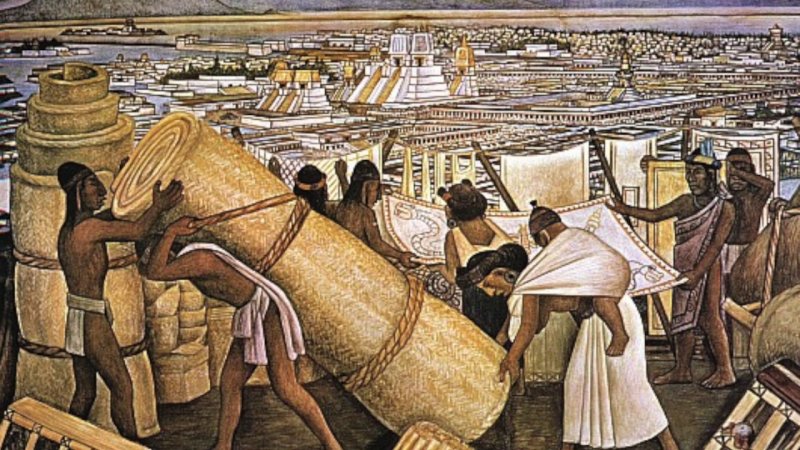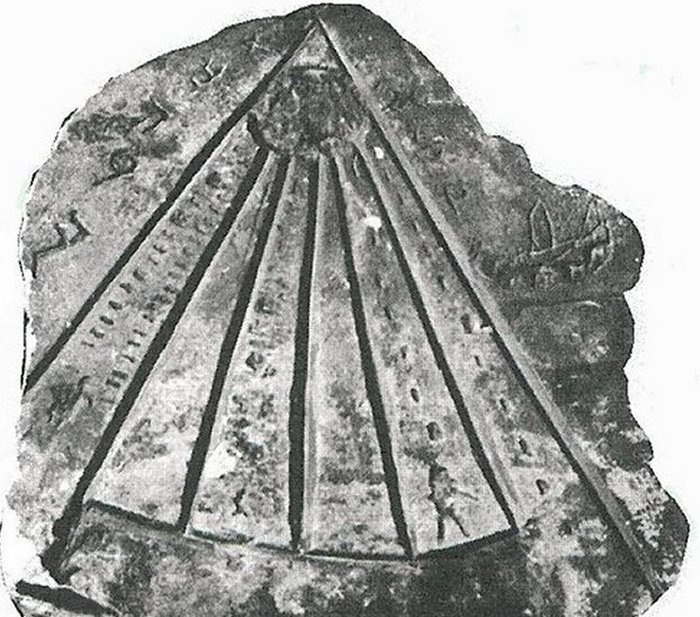Mysterious Sherbrooke Stones – Did Africans Visit North America 2,500 Years Ago?
Ellen Lloyd - AncientPages.com - In the Museum of the Seminary of Sherbrooke in Quebec, Canada there are two very interesting stones that tell an intriguing story about North America’s distant past.
According to the inscriptions on the stones, people from Africa visited North America 2,500 years ago. The stones have been in the museum since at least 1910, but they were discovered much earlier.
Did people from Africa visit America in the distant past?
The two flat stone pieces of limestone are three feet long and one and a half feet high and weigh around four hundred pounds. They were discovered in a field near the St Francois River by M. Ludger Soucy sometime early in this century.
Ancient Visitors From North Africa In America?
At the time of the discovery the considerably weathered stones were covered with two lines of unknown script.
Professor Thomas Lee, a Laval University archaeologist deciphered the inscriptions. According to Professor Lee the Egyptian inscriptions were written in a Libyan script. “The Libyans would have been operating, in my opinion, out of Carthage, which was a Phoenician city at the time", Professor Lee said.
He added saying the inscriptions suggest an ancient expedition reached the area after sailing up the St. Francis River, which flows into the St. Lawrence River, southwest of Trois-Rivieres, Quebec.
The inscriptions are written in a format called Boustrophedon, in which "you read the first line left to right and the next line right to left."
It is unknown how many ancient civilizations visited North America before the arrival of Columbus.
Professor Howard Fell of the department of comparative zoology at Harvard University believed that the message was in Libyan from North Africa “Thus far, our expedition traveled in the service of Lord Hiram, to conquer land. This is the record of Hanta, attained the great river. And these words cut in stone.”
One inscription on the stone reads - "Expedition that crossed in the service of Lord Hiram to conquer territory."
The other of the pair discovered together bears the inscription: "Record by Hata, who attained this limit on the river, moored his ship and engraved this rock."
Professor Fell also said that he believes that "barabarous lands at the end of the world" referred to in similar inscriptions in Spain definitely describe the Americas. He said evidence supporting an earlier discovery of the Americas than that of the Vikings has also been found in Spain and North Africa.
In his opinion, the people who left the stones made "at least two" expeditions, including one to the Yucatan area of Mexico. One stone found there "gives the area its name", he said.
Davenport And Pontotoc Stele Reveal Ancient Egyptians And Africans Visited America
Ancient history of North America is still shrouded in mystery. Historians, archaeologists, and other scientists keep debating who really discovered North America and we have many reasons and plenty of evidence to say Christopher Columbus was by no means the first foreigner who discovered the continent.
Some scholars have suggested ancient Egyptians and Africans visited America long before Columbus. The controversial Davenport and Pontotoc stele are two artifacts that may prove the presence of ancient Egyptians and Africans in America. Some researchers think the Davenport and Pontotoc stele are fakes, but there are also scientists who think such controversial artifacts deserve more study.
According to Professor Fell, the Davenport Stele contains a “trilingual text” in the Egyptian, Iberian-Punic, and Libyan languages. “This stele, long condemned as a meaningless forgery, is in fact one of the most important steles ever discovered,” wrote Professor Fell in his book America B. C. – Ancient Settlers in the New World.
Professor Fell surmised that the Davenport Stele dates back to the Twenty-second, or Libyan, Dynasty of the Egyptian empire, “a period of overseas exploration.”
On one side of the artifact, there are carvings of Egyptian writing and the festival. On the other side there is a picture of two Egyptian obelisks, a pyramid, and African animals. The Pontotoc Stele is considered to be the work of an early Iberian colonist in America, as the script is known otherwise from the Cachao-da-Rapa region in northern Portugal. It depicts the life-giving rays of the sun descending upon the earth beneath.
If we can imagine that Viking visited America in ancient times, why should Phoenicians, Libyans, Egyptians or other sailing cultures do the same?
Written by Ellen Lloyd – AncientPages.com
Copyright © AncientPages.com All rights reserved. This material may not be published, broadcast, rewritten or redistributed in whole or part without the express written permission of AncientPages.com
More From Ancient Pages
-
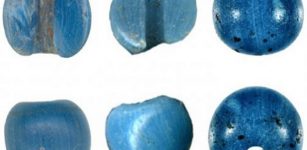 How Did These Beautiful Venetian Glass Beads Reach North America Long Before Columbus?
Archaeology | Feb 15, 2021
How Did These Beautiful Venetian Glass Beads Reach North America Long Before Columbus?
Archaeology | Feb 15, 2021 -
 Mystery Of Acoma – Sky City Of And People Of The White Rock Reveal A Surprise
Civilizations | Aug 16, 2018
Mystery Of Acoma – Sky City Of And People Of The White Rock Reveal A Surprise
Civilizations | Aug 16, 2018 -
 Pharaoh Ramses II’s Sarcophagus On Display For The First Time In 50 Years
Artifacts | Apr 11, 2023
Pharaoh Ramses II’s Sarcophagus On Display For The First Time In 50 Years
Artifacts | Apr 11, 2023 -
 Puzzling Jewellery From Grave Of High Status Viking Woman Delivered At Museum’s Door
Artifacts | Jul 23, 2022
Puzzling Jewellery From Grave Of High Status Viking Woman Delivered At Museum’s Door
Artifacts | Jul 23, 2022 -
 Unexplained Dangerous Secret In The Great Smoky Mountains
Featured Stories | Apr 20, 2024
Unexplained Dangerous Secret In The Great Smoky Mountains
Featured Stories | Apr 20, 2024 -
 Two Well-Preserved Shipwrecks Found By Swedish Maritime Divers In Baltic Sea
Archaeology | Jan 30, 2018
Two Well-Preserved Shipwrecks Found By Swedish Maritime Divers In Baltic Sea
Archaeology | Jan 30, 2018 -
 Ancient Fresco Tomb Dated A 1000-Years Ago Was Accidentally Discovered In Northern China
Archaeology | May 5, 2020
Ancient Fresco Tomb Dated A 1000-Years Ago Was Accidentally Discovered In Northern China
Archaeology | May 5, 2020 -
 Faiyum Mummies: Long Lost Secrets Of A Mummy’s Portrait
News | Nov 24, 2020
Faiyum Mummies: Long Lost Secrets Of A Mummy’s Portrait
News | Nov 24, 2020 -
 10 Remarkable Advanced Ancient Technologies Ahead Of Their Times
Ancient Technology | Jul 23, 2019
10 Remarkable Advanced Ancient Technologies Ahead Of Their Times
Ancient Technology | Jul 23, 2019 -
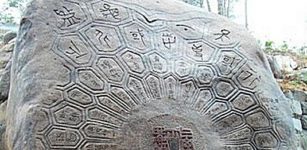 Giant Turtle-Shaped Rock Wangsan, Korea – One Of The Strongest Sources Of “ki”
Featured Stories | Jun 24, 2015
Giant Turtle-Shaped Rock Wangsan, Korea – One Of The Strongest Sources Of “ki”
Featured Stories | Jun 24, 2015 -
 Olmec Civilization Remains An Intriguing Ancient Puzzle
Civilizations | Feb 2, 2017
Olmec Civilization Remains An Intriguing Ancient Puzzle
Civilizations | Feb 2, 2017 -
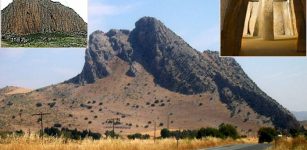 Mysterious Menga Dolmen: A New Very Old Monument Discovered
Archaeology | Sep 21, 2020
Mysterious Menga Dolmen: A New Very Old Monument Discovered
Archaeology | Sep 21, 2020 -
 The Phrase Hip Hip Hooray Has Ancient Roots
Ancient History Facts | Jun 6, 2018
The Phrase Hip Hip Hooray Has Ancient Roots
Ancient History Facts | Jun 6, 2018 -
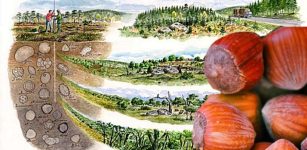 Hazelnuts -‘Time Capsule’ To Reconstruct Landscape Of Ancient Forests In Sweden
Archaeology | Mar 5, 2024
Hazelnuts -‘Time Capsule’ To Reconstruct Landscape Of Ancient Forests In Sweden
Archaeology | Mar 5, 2024 -
 Mysterious Forest Of Treasure – Why Is It Forbidden To Stay In Nidhivan After Sunset?
Featured Stories | Nov 24, 2021
Mysterious Forest Of Treasure – Why Is It Forbidden To Stay In Nidhivan After Sunset?
Featured Stories | Nov 24, 2021 -
 15,000-Year-Old Shell Beads Found Kebara Cave Are The Oldest Known Use Of Organic Red Pigments
Archaeology | Oct 27, 2023
15,000-Year-Old Shell Beads Found Kebara Cave Are The Oldest Known Use Of Organic Red Pigments
Archaeology | Oct 27, 2023 -
 Wolstenholme Towne: Lost Virginia Settlement – Destroyed, Abandoned And Forgotten
Featured Stories | Jun 26, 2018
Wolstenholme Towne: Lost Virginia Settlement – Destroyed, Abandoned And Forgotten
Featured Stories | Jun 26, 2018 -
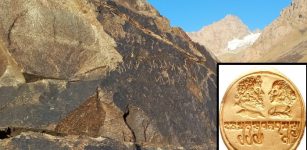 Enigmatic Ancient ‘Unknown Kushan Script’ Deciphered By Scientists
Archaeology | Jul 13, 2023
Enigmatic Ancient ‘Unknown Kushan Script’ Deciphered By Scientists
Archaeology | Jul 13, 2023 -
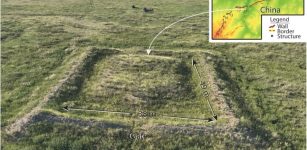 Mysterious Mongolian Arc Investigated By Scientists
Archaeology | Jan 2, 2024
Mysterious Mongolian Arc Investigated By Scientists
Archaeology | Jan 2, 2024 -
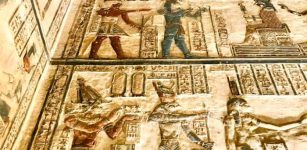 New Images From The Magnificent Dendera Temple Where Restoration Works Continue
News | Mar 15, 2022
New Images From The Magnificent Dendera Temple Where Restoration Works Continue
News | Mar 15, 2022


